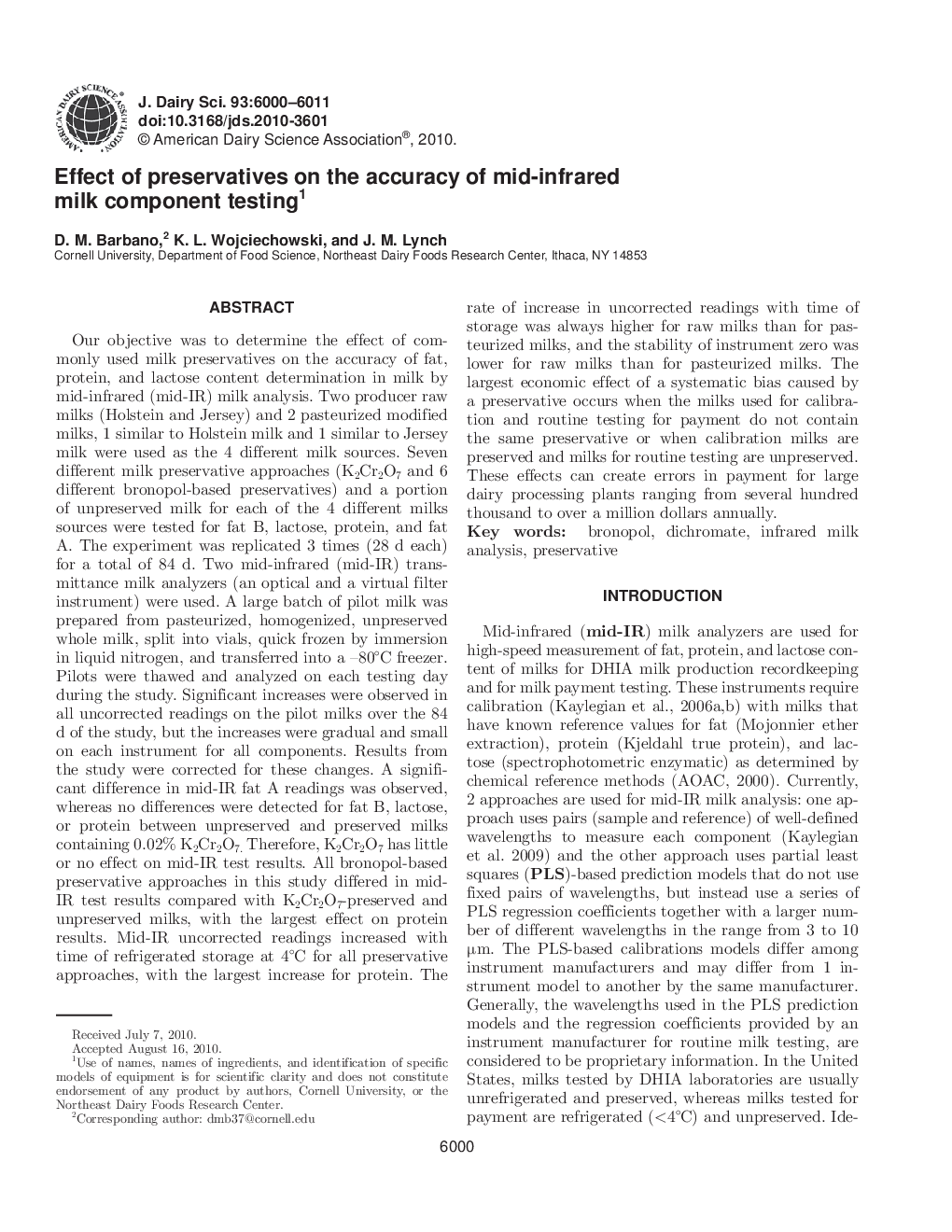| Article ID | Journal | Published Year | Pages | File Type |
|---|---|---|---|---|
| 10979274 | Journal of Dairy Science | 2010 | 12 Pages |
Abstract
Our objective was to determine the effect of commonly used milk preservatives on the accuracy of fat, protein, and lactose content determination in milk by mid-infrared (mid-IR) milk analysis. Two producer raw milks (Holstein and Jersey) and 2 pasteurized modified milks, 1 similar to Holstein milk and 1 similar to Jersey milk were used as the 4 different milk sources. Seven different milk preservative approaches (K2Cr2O7 and 6 different bronopol-based preservatives) and a portion of unpreserved milk for each of the 4 different milks sources were tested for fat B, lactose, protein, and fat A. The experiment was replicated 3 times (28 d each) for a total of 84 d. Two mid-infrared (mid-IR) transmittance milk analyzers (an optical and a virtual filter instrument) were used. A large batch of pilot milk was prepared from pasteurized, homogenized, unpreserved whole milk, split into vials, quick frozen by immersion in liquid nitrogen, and transferred into a â80°C freezer. Pilots were thawed and analyzed on each testing day during the study. Significant increases were observed in all uncorrected readings on the pilot milks over the 84 d of the study, but the increases were gradual and small on each instrument for all components. Results from the study were corrected for these changes. A significant difference in mid-IR fat A readings was observed, whereas no differences were detected for fat B, lactose, or protein between unpreserved and preserved milks containing 0.02% K2Cr2O7. Therefore, K2Cr2O7 has little or no effect on mid-IR test results. All bronopol-based preservative approaches in this study differed in mid-IR test results compared with K2Cr2O7-preserved and unpreserved milks, with the largest effect on protein results. Mid-IR uncorrected readings increased with time of refrigerated storage at 4°C for all preservative approaches, with the largest increase for protein. The rate of increase in uncorrected readings with time of storage was always higher for raw milks than for pasteurized milks, and the stability of instrument zero was lower for raw milks than for pasteurized milks. The largest economic effect of a systematic bias caused by a preservative occurs when the milks used for calibration and routine testing for payment do not contain the same preservative or when calibration milks are preserved and milks for routine testing are unpreserved. These effects can create errors in payment for large dairy processing plants ranging from several hundred thousand to over a million dollars annually.
Related Topics
Life Sciences
Agricultural and Biological Sciences
Animal Science and Zoology
Authors
D.M. Barbano, K.L. Wojciechowski, J.M. Lynch,
